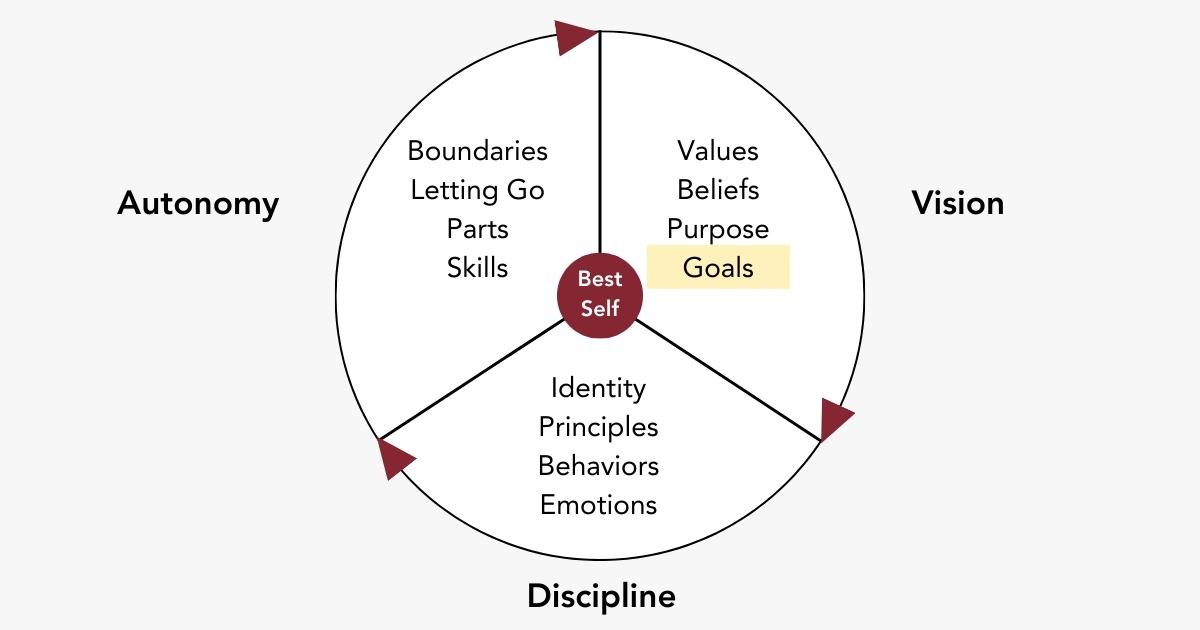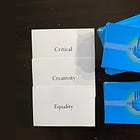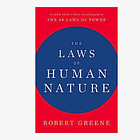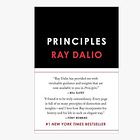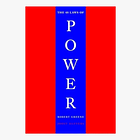Know Your Vision and Goals to Create a Compelling Future
Decide what you want and why to fuel your life's pursuit

We are all allowed to be anything we want in this short life. But the daily demands of life and a myopic view can take you to an unintended destination over time. People have often been thrust down a path based on the family they were born into or circumstances outside their control. They point to those as easy reasons for not living their potential. Over time, people accept the life they have been dealt with due to a lack of self-belief and clarity about the life they want. Without an inspiring vision, you will wander, wasting valuable time and energy and never quite reaching your true potential. You find yourself conforming to societal pressures or the forces of what other people think you should be. A deep and visceral connection to your vision will power your unique journey and mitigate the forces shaping a mediocre life. Open up your imagination to vividly describe the life you wish for.
Overview
This strategy intends to create space and an open mind to envision the life you want. It’s an exercise you will often do as your life unfolds through different phases. Envisioning what it looks like can be a powerful motivator to set goals that align with reaching that destination.
Here’s the good news. Each of us has the power and agency to create a different life if the one we are living is not working for us. The key is deepening your self-awareness in a creative space outside your normal routine. Your answers to the questions in this post will challenge you.
So often, it is the case that external forces dictate our path. Sometimes, forces outside our control influence where we end up. Poor decisions or failing to envision the life we would love is likely the case. People influence us instead of having a vision for our life in a future place. Many of us hold that vision as an idea in our unconsciousness but not fully fleshed out in detail. It’s a movie playing in our minds. Decisions we make daily may or may not align with the fuzzy vision. We can be anything we want, but we must envision and translate the story into a readable format to make it a reality. Only then can we take the small steps to bring the story to life.
I don’t know about you, but I never got the homework assignment to create a vision and write a story to describe my future life. The expectation set for me was to go to college, study hard, and then get a job. A lot has changed since then, but it’s easy to put off writing the story or think you cannot change your situation. You may have doubts and lack the self-confidence to believe it is possible. I encourage you to embrace a mindset that anything is possible when we commit to action. You get one shot to live a life on your terms.
Throughout our lives, we must write a new chapter as we learn more about ourselves. Chapters will close, and new chapters will be written as events that change our situation or direction unfold. Our minds can become molded into the same way of thinking after years of living a certain way. We need to convince ourselves about the life we want. After we have a unique and specific story, we can develop action plans to make the story a reality. You are the author – only you can do this.
Imagine what your life could be without any fear of failing and reaching your full potential. Stories are a creative way of vividly describing and visually internalizing what your life could be. The more specifically you can describe it, the higher the chance of realizing it one day. We only get one shot at this life, so make that story aspirational and memorable.
Fast forward to describing what one day looks like in the future. Be very specific about where you are living and with whom. What are you doing? What excites you? Go deep inside writing without fear and declare what you want.
You must articulate what career success looks like. What is the business domain you are working in? Envision you have been working hard for months. What rewards are realized after you achieve that level of success? Are you an entrepreneur, or are you working for an organization? What does ultimate career freedom look like?
Envision the story of your life.
Translating Vision into Outcomes
Vision aspirationally sets a future view of what we want and the underlying “why” of what we hope to feel and experience. Values, beliefs, and emotions influence how creatively we envision a compelling future.
If we value the status quo, don’t believe in ourselves that we can do something great, and feel anxious and fearful, we are in a reactive state and limit the likelihood that we will experience our true potential. I view this as playing defense.
If we value curiosity, live with empowering beliefs, and feel sensations of gratitude and calmness, we can write a compelling and exciting vision that we are driven to pursue with all our energy. I view this as playing offense.
Articulating a compelling vision for our lives can serve as a “true north” to shape daily decisions on what we focus on and allocate our precious time to. The key is being clear about what you want and why you want it so that it’s a compelling reason to pursue each day.
It’s common for people to craft a career strategy and overlook how that aligns with their broader life. We are taught to plan careers but often not how this integrates with our values and what is essential across all aspects of our lives.
Businesses are challenged not to overstep their bounds between the personal and work aspects of helping employees develop career plans. Therefore, many career strategy programs do not reinforce a “whole person” methodology. The problem is that we don’t instantly change into a different person when we walk into that work. We may even choose a specific career or opportunity if we understand how dimensions of our personal lives could be integrated into our career strategy. Some dimensions of our jobs may conflict directly with our personal lives.
Creating a personal vision is built upon the values, beliefs, and positive emotions you desire to experience more often. A clear vision will dictate how you will prioritize your time and focus. It will also act as a powerful internal force that shapes your direction and choices.
Values and Beliefs – guiding principles and tenets of how we act and behave that stand the test of time.
Purpose – the reason for our existence that emanates from our values and acts as a guiding star that we always worked toward but never fully attained.
Roles – who we play that will shape our vision.
Outcomes – audacious goals with a clear finish line and time frame.
Values and Beliefs
These two topics were covered in the following posts, and I recommend you read these before proceeding.
Purpose
This vision process will shape the definition of your purpose. A single purpose may not define our life, but it’s worth considering what we aspire to achieve long term. People may define their purpose as being the greatest athlete in their sport or a respected parent. Your purpose is essential to establishing a solid foundation of your direction and can often shape how you spend a typical day. A purpose can be an aspirational north star that can challenge us to achieve greatness in any aspect of our lives.
Roles
Our vision needs to consider the complete set of roles we play in life. Examining our core values and beliefs can give us insight into one or more roles. For example, a leader in the workplace, a father or mother to our children, or a volunteer in our local community. Identifying the roles we play when living our values can help us determine the expectations others have of us in that role. Delivering on those expectations brings us fulfillment and strengthens relationships.
We must also evaluate how these roles may create conflict in our lives. For example, a job that requires extensive travel may conflict with the needs and expectations of being a parent. We must invest in each role to shape our whole person and make choices across our careers and lives that bring us fulfillment, joy, and achievement.
Outcomes - what do you want and why?
Your vision must set an aspirational destination with clear and tangible goals. People often do not get what they want because the target is fuzzy or undefined. Well-defined goals will drive your focus and simplify decisions that do not contribute toward progress.
One popular goal-setting methodology is objectives and key results (OKRs). The objective is the aspiration goal statement that is concise and qualitative. Key results are quantified outcomes with a specific time frame and serve as incremental progress toward achieving the objective.
Goals are compelling, and when there are emotional why’s that explain the reason we are pursuing a goal. It’s the emotion or experience we will feel pursuing and achieving the goal. Peel the layers of the onion to get to arrive at the core need.
Summary
A documented personal vision can often be a visual reminder of our priorities. It will provide clarity and focus for daily life. The biggest challenge many of us have is how we allocate our time. It’s a precious and limited asset that is not forever.
Actions
1. Write the story of your life.
You are the star of your life story.
We are given one shot to author the story that defines us.
There is a beginning and an end – neither do you control.
What happens in between is your precious life – never to be replicated again.
Open up your journal – write the story without any filters or constraints.
Envision life 6-12 months from now – you are living the life of your dreams.
The vivid detail is energizing – let that fuel what your life becomes.
2. Untether the stories that do not serve you.
You are born with a non-stop voice inside your head.
You are not the voice of the mind – you are the one who hears it (Michael A. Singer).
Do not listen to the stories that hold you back – the fake news.
Untether the voice – you are in control of your destiny.
3. Rewrite the story to activate change.
The future will bring the change you do not control – expect that.
There is a gift waiting to be discovered from every setback and loss.
Open your eyes and widen your perspective to find it.
Embrace the empowerment to write a new chapter or whole new book.
Be courageous to venture into the unknown depths of your curiosity.
You are not a prisoner of your past – free yourself.
Edit often – you own the plot.
4. Be a storyteller
Without a story, nobody will know how to help you.
Tell it to colleagues in the workplace to accelerate your path.
Tell your partner to become co-stars in the screenplay.
Most people will be eager to help you when they hear the passion in your story.
Read the story again and again to yourself – change your habits to make it a reality.
Embrace the freedom of speech – you own and author your life story.
5. Envision what you want with clarity.
Recognize that the greatest gifts in life take time to materialize.
Think long-term.
Describe compelling and almost unattainable goals.
Identify outcomes with a clear finish line and time frame.
Ensure these outcomes are rooted in your values and purpose.
6. Articulate the “why” to provide fuel for your pursuit.
We will endure and overcome obstacles toward the goal when there is a deep-rooted emotion.
Write down the reasons for each goal - what you want to feel and experience.
Introspect each why iteratively until you touch the raw human need.
7. Make deposits during your goal pursuit.
List 3-5 outcomes for each goal that will serve as visible progress milestones.
Consider the week ahead as a “sprint plan” with key results you set on Sunday.
8. Emotionally connect with your vision daily.
Read your personal vision document daily.
Align your behaviors and daily work activities to accrue value to your goals.
Exercises
Write a short story that describes a typical day or week six months from now. The intent here is to drive change in the short term. Be holistic in describing work and your personal life. Include vivid details of where and who you may be living with. What are the work activities during the day? What are you doing when you are at your peak emotional and productive state? If I could experience any life, what would a typical day or week look like?
Do the same exercise with time in the future (1-5+ years). The value is describing the story with details. That way, it becomes unique, exciting, and specific. You can then make action plans to make the story reality.
Identify and touch the friction that is preventing you from living this life. What actions must I take to transition to the life I wish for? What must I stop doing to transition to the life I wish for? What keeps me from taking the first few steps toward this life?
Document your goals with interim milestones and whys?
What I Want and Why
Goal #1: <describe it here>
Why I want this:
reason #1
reason #2
………..
Key Results to make progress towards the goal:
key result #1
key result #2
………..
The emotions I will feel experiencing this goal (refer to CSF 1-3 for the spreadsheet to 87 emotions):
emotion #1
emotion #2
………..
Goal #2: <describe it here>
repeat the exercise above
Experiment With This
One method I found helpful is taking strict control of my calendar. All scheduled activities relate to at least one of my goals. I can then evaluate if my time will be allocated to what I have defined as essential. Is there an imbalance between what I want and yet my time and focus say otherwise?
Write a personal vision document that includes your values, purpose, and mission (specific goals). Transferring what is in your head into written form is the first step towards coming to terms with your values and a clear vision to guide your life. Print your vision document so it’s visible each day. The constant reminder has a way of influencing your calendar and mental state.
Conflict generally arises when you are not living your values or if a personal or professional relationship has values that differ from yours. Is there a relationship you should end or distance from to stay true to your values?
Resources
Books
Chapter 13 – Advance with a Sense of Purpose
Principle 2.1 Have clear goals
Law 25: Re-create Yourself


